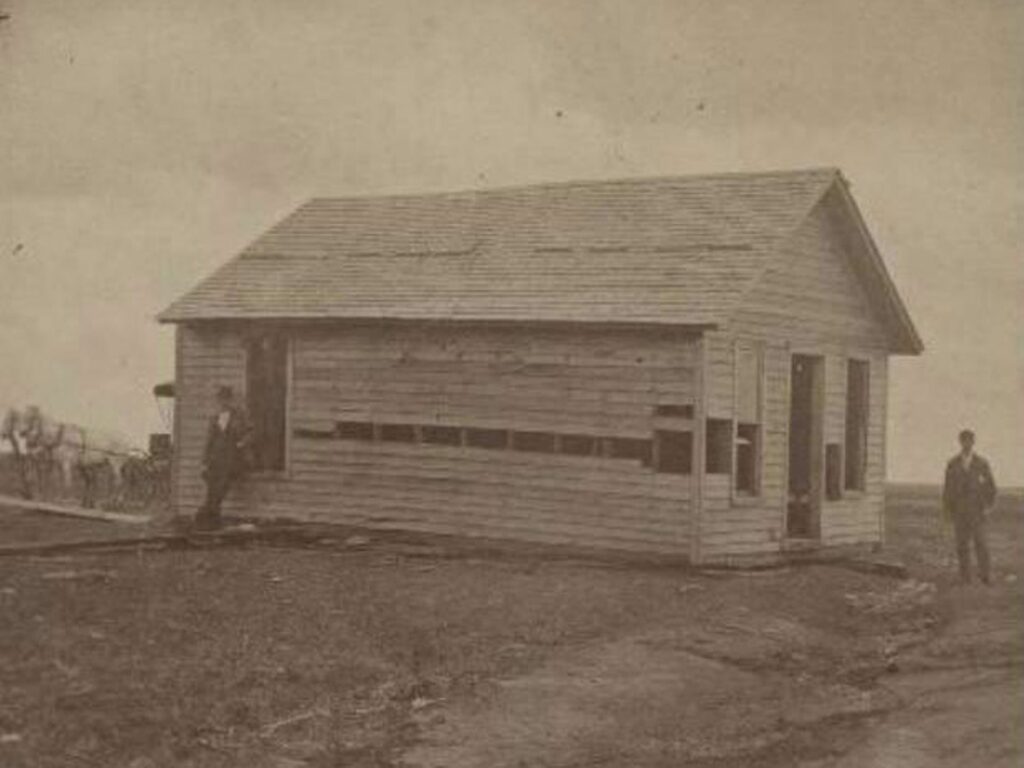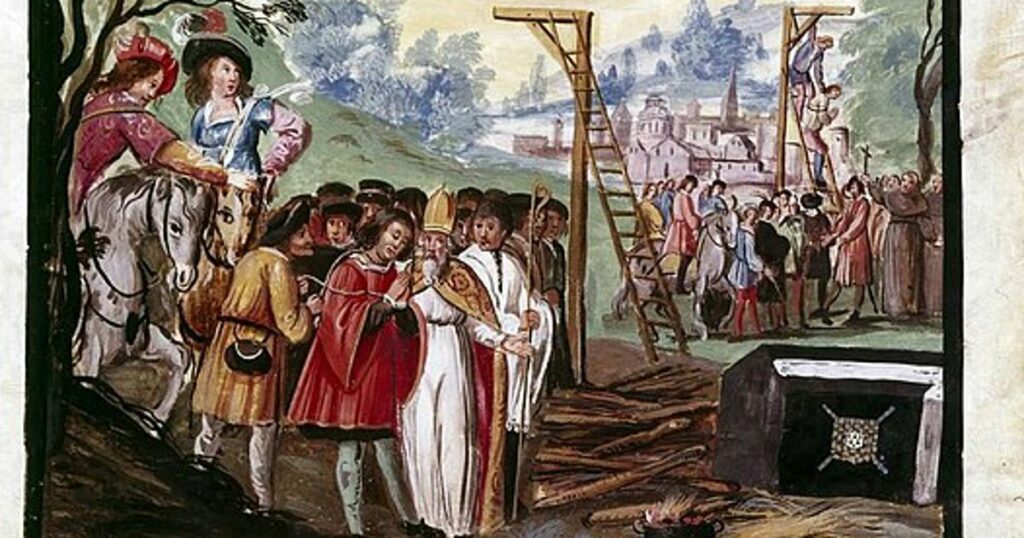In 1920s Chicago, violence was everywhere. With prohibition in full swing, and bootleggers rising to meet the ever-increasing demand for alcohol, tensions across the city were high.
Completing the recipe for violence was the organized crime syndicates that all but ran the city. Ranging from small-time bootlegging gangs to enormous crime empires like Al Capone’s Chicago Outfit, organized crime was everywhere. And where there were gangs, there were feuds.
All of this came to a head on February 14, 1929, when seven men belonging to the North Side Gang were murdered inside a car garage. This would come to be known as the St. Valentine’s Day Massacre.
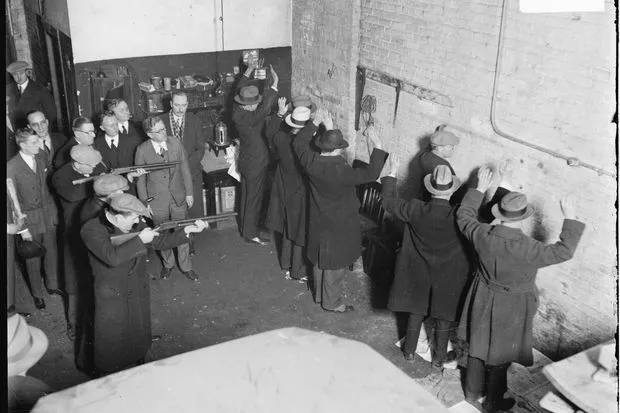
The Leadup to the St. Valentine’s Day Massacre: Al Capone and George “Bugs” Moran
Rivalry was part and parcel of bootlegging life in 1920s Chicago. It wasn’t strange for arguments and feuds to be settled with gun battles or covert assassinations, but what occurred on Valentine’s Day 1929 was unlike anything that had been seen before.
At the heart of the massacre was the ongoing rivalry between two of the most powerful Chicago Gangs–Al Capone’s Chicago Outfit and the North Side Gang, an Irish group run by George “Bugs” Moran.
Capone’s Chicago Outfit was by and large the biggest crime syndicate in the city. After taking over from Johnny Torrio, Al Capone began absorbing many of the smaller gangs of the area into the Chicago Outfit. Though he used several means to do so, his most common was outright violence.
There was one other gang that rivaled Capone’s for size, territory, and violence–The North Side Gang. After the death of Dion O’Banion at the hands of Capone’s predecessor, anger had been brewing between the two groups. Capone was ready to have it dealt with.
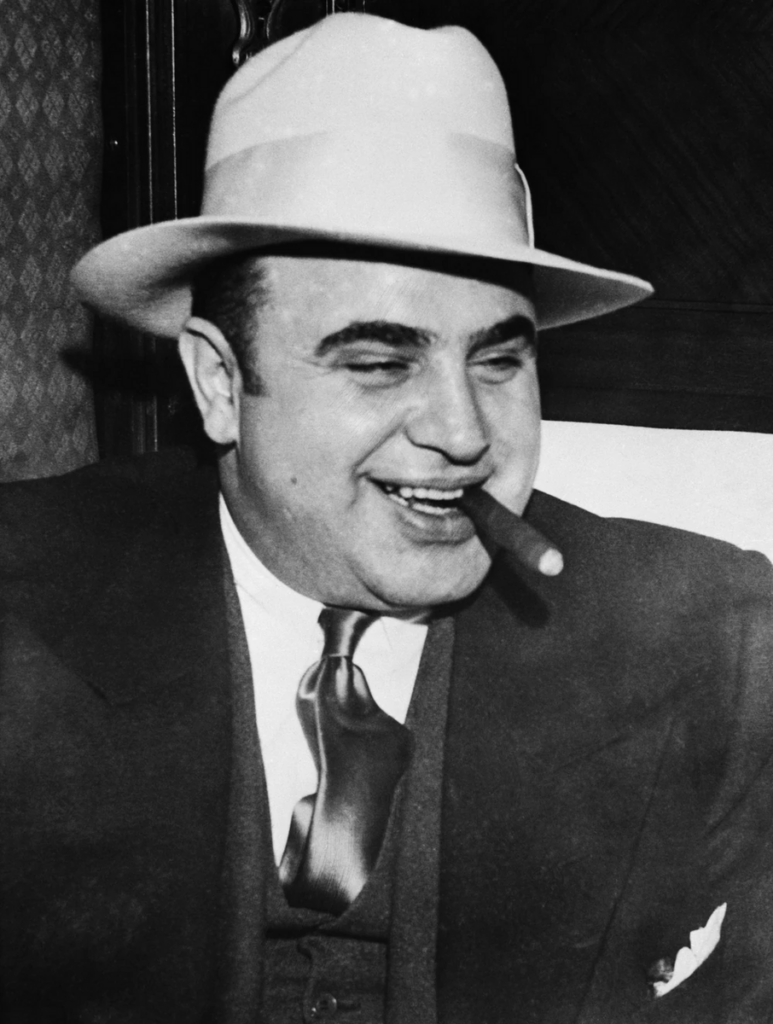
The St. Valentine’s Day Massacre
It was painfully cold on Valentine’s Day morning at 2212 N. Clark St.
Seven members of the North Side Gang had arrived early to broker a deal with Detroit’s Purple Gang for cheap whiskey. It was supposed to be eight men, but gang leader Moran had woken up late and was running behind.
It was around 10:30 am when a Cadillac pulled up outside of the garage. Four men stepped out–two in plainclothes, and two dressed as police officers. The fake officers each carried a shotgun, and the other two men carried Thompson sub-machine guns.
Their arrival took the seven North Side Gang men off guard, even more so when the men dressed as officers ordered them to line up against the back walls. Then, without hesitation, the four men from the Cadillac opened fire, spraying bullets right to left until their guns were empty.
When they were finished, the fake officers came in with the shotguns. They blasted away the faces of the dead men until some of them were barely recognizable.
Then, to keep up appearances for any bystanders outside of the garage, the fake police officers led the other two men out by gunpoint and loaded them back into the Cadillac. After that, they were gone.
The victims of the St. Valentine’s Day Massacre were:
- Adam Heyer: Bookkeeper for Moran’s gang
- Albert Kachellek: Second in command of the North Side Gang
- Reinhardt Schwimmer: Only associated with the gang, a former optometrist
- Albert Weinshank: Ran several money-laundering businesses for Moran’s gang
- Peter Gusenberg: An enforcer for the North Side Gang
- Frank Gusenberg: Peter’s brother, another enforcer
- John May: The North Side Gang’s car mechanic
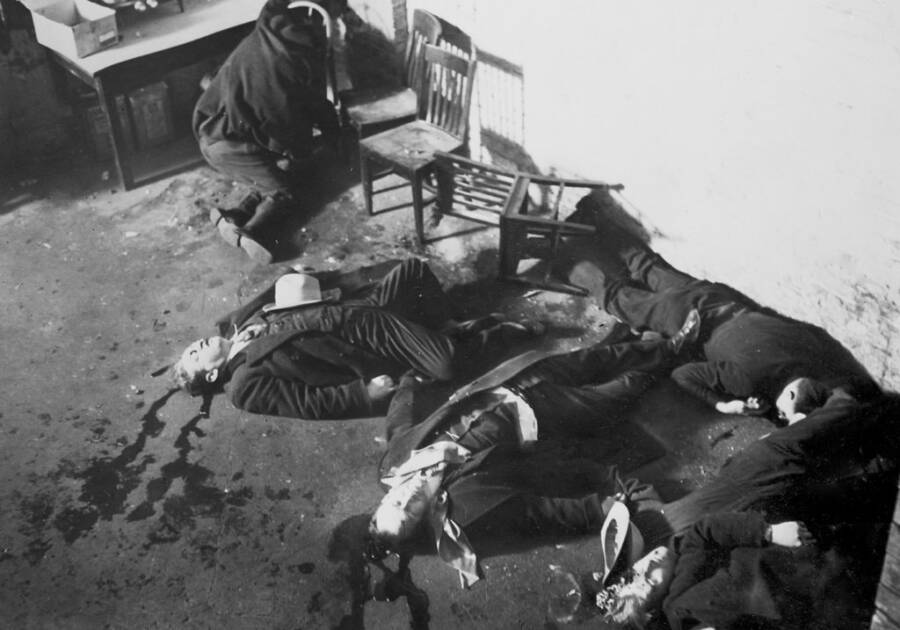
Investigation, Suspects, and Theories
News of the massacre spread through the Chicago public like wildfire, putting gang leaders in a tough position. The initial reaction was shock, followed by outrage that something so terrible was able to be carried out in their city in broad daylight.
There was a push for law enforcement to take bootlegging gangs more seriously, and for the massacre itself to be solved. The Chicago Police, under the leadership of Detective William Sullivan, began to try and unravel the mystery.
There was no lack of leads–police already knew of the rivalry between Moran and Capone. They were able to find the getaway car–a Cadillac that had been in a garage fire that had been intentionally set. There were even multiple, extremely credible, eyewitness accounts.
One of the victims of the massacre had survived for a short period despite being shot 14 times. But he refused to give police any information before succumbing to his wounds in the hospital.
So with all of this evidence, why is the St. Valentine’s Day Massacre still, for the most part, unsolved?
Is the St. Valentine’s Day Massacre Unsolved?
To this day, in early 2024, no one has ever been arrested for the murders that occurred during the St. Valentine’s Day Massacre.
Several factors played into the lack of arrests. The biggest issue was that the man who is assumed to have ordered the massacre, Al Capone, was vacationing in Florida at the time it occurred.
Who Were the Suspects for the St. Valentine’s Day Massacre?
Despite no one ever having been charged, Chicago police eventually settled on a few individuals who they believed committed the killings.
- John Scalise: An influential member of the Chicago Outfit who had participated in various other shootings.
- Albert Anselmi: Another prominent member of Capone’s gang who had done violent work for him before.
- Jack McGurn: A hitman and enforcer for the Chicago Outfit
- Frank Rio: One of Al Capone’s bodyguards
- Fred Burke: The man that can be most definitively linked with the massacre is Fred Burke. He matched the description of the driver of the getaway car, and once his apartment was raided, Thompson’s submachine guns as well as a variety of other weapons were seized. Forensic analysis would later link these weapons to the massacre.
Although there were never any convictions made in relation to the St. Valentine’s Day massacre, it was common knowledge that Al Capone and the Chicago Outfit were likely behind the murders.
This put Capone in the perfect position to take almost complete control of the Chicago bootlegging scene, which he did with gusto. The only problem was that it also put him in the crosshairs of both Chicago police and the IRS, who would, in the end, arrest Capone not for murder, but for tax evasion.
References
“St. Valentine’s Day Massacre”
https://www.history.com/topics/crime/saint-valentines-day-massacre
“The St. Valentine’s Day Massacre”- John O’Brien
https://www.chicagotribune.com/nation-world/chi-chicagodays-valentinesmassacre-story-story.html
